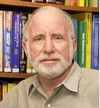System Upgrade on Tue, May 28th, 2024 at 2am (EDT)
Existing users will be able to log into the site and access content. However, E-commerce and registration of new users may not be available for up to 12 hours.For online purchase, please visit us again. Contact us at customercare@wspc.com for any enquiries.
Porphyrins, phthalocyanines and their numerous analogs and derivatives are materials of tremendous importance in chemistry, materials science, physics, biology and medicine. They comprise the red color in blood (heme) and the green in leaves (chlorophyll); they are also excellent ligands that can coordinate with almost every metal in the Periodic Table. Grounded in natural systems, porphyrins are incredibly versatile and can be modified in many ways; each new modification yields derivatives demonstrating new chemistry, physics and biology, with a vast array of medicinal and technical applications.
Because porphyrins are currently employed as platforms for study of theoretical principles and applications in a wide variety of fields, the Handbook of Porphyrin Science represents a timely ongoing series dealing in detail with the synthesis, chemistry, physicochemical and medical properties and applications of polypyrrole macrocycles. It is noteworthy that every year, new applications for tetrapyrrole ligands are developed and exploited.
Professors Karl Kadish, Kevin Smith and Roger Guilard are internationally recognized experts in the research field of porphyrinoids, each having his own separate but complementary area of expertise in the field. Between them, they have published over 1750 peer-reviewed papers and jointly edited more than 55 books on diverse topics related to porphyrins and phthalocyanines. In assembling the set of new volumes of this unique handbook, they have selected and attracted the very best scientists in each sub-discipline as contributing authors.
The Handbook of Porphyrin Science will prove to be a modern authoritative treatise on the subject as it continues as a collection of up-to-date works by world-renowned experts in the field. Complete with hundreds of figures, tables and structural formulas, and thousands of literature citations, all researchers and graduate students in this field will find it to be an essential, major reference source now, and for many years to come.
Contents:- Volume 41: Novel Porphyrinoid Precursors:
- Heteroporphyrinoid Systems: Compounds and Materials Composed of Different Chromophores (Christopher Farley, Joana T Ferreira, Amit Aggarwal, N V S Dinesh K Bhupathiraju, Sunaina Singh, Charles Michael Drain and João P C Tomé)
- Synthesis of 2,2'-Bipyrroles and Pyrrolyldipyrromethenes (Lijuan Jiao, Erhong Hao and Changjiang Yu)
- Molecular Hybrids of Cavitands and Porphyrinoids (Ümit İşci, Zeynel Şahin, Fabienne Dumoulin and Vefa Ahsen)
- Unusual Properties of Asymmetric Porphycenes (Oriol Planas, Thibault Gallavardin and Santi Nonell)
- Volume 42: Towards Tuned Properties of Porphyrinoids:
- Resonance Raman Spectroscopy as a Structural Probe of the Cytochrome P450 Enzymatic Cycle (Piotr J Mak)
- Porphyrin-Based Donor-Acceptor Dyads: Engineering the Linker and Tuning the Photoinduced Electron Transfer (Nikolai V Tkachenko, Alexander Efimov and Helge Lemmetyinen)
- Self-Organization of Porphyrins and Phthalocyanines in Two and Three Dimensions (S Holger Eichhorn and Elmahdy Abdulhamied)
- Excited Electronic States of Porphyrin-Based Assemblies Using Density Functional Theory (Gloria I Cárdenas-Jirón, Tunna Baruah and Rajendra R Zope)
- Volume 43: Design of Precursors for Sustainable Chemistry:
- Sustainable Approaches in the Syntheses and Uses of Porphyrin(oid)s (L Jean-Gérard, N Kardos, M Draye and B Andrioletti)
- Bio-Inspired Electrodes (Sohini Mukherjee, Kushal Sengupta, Sabyasachi Bandyopadhyay and Abhishek Dey)
- Metallomacrocycles for the Creation of Non-Noble Metal Noble Metal and Electrocatalysts Toward Oxygen Reduction Reactions (Zihui Zhai, Chenxi Qiu and Yujiang Song)
- Photochemical Internalization (PCI) — A Technology for Intracellular Drug Delivery (Kristian Berg and Pål Kristian Selbo)
- Volume 44: Bio-Inspired Porphyrin Scaffolds for Synthesis and Catalysis:
- MauG, a Diheme Enzyme Involved in the Synthesis of the Enzyme Cofactor, Tryptophan Tryptophylquinone (Victor L Davidson and Carrie M Wilmot)
- Templated Porphyrin Assemblies Using Bio-Inspired Scaffolds: Covalent and Non-Covalent Approaches (Milan Balaz, Iwona Mames, Joanna P Pursey, Lauren L Sargisson, Eugen Stulz and Krisztina Varga)
- Porphyrinic Metal-Organic Frameworks as Single-Site Heterogenous Catalysts (Jacob A Johnson and Jian Zhang)
- Oxidative Transformations of Organic Compounds Mediated by Metalloporphyrins as Catalysts (Mário M Q Simões, Sónia M G Pires, M Graça P M S Neves and José A S Cavaleiro)


























